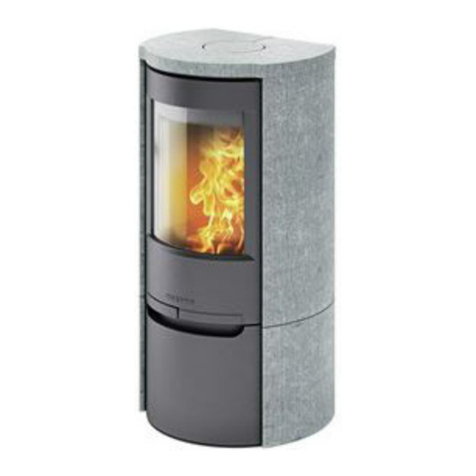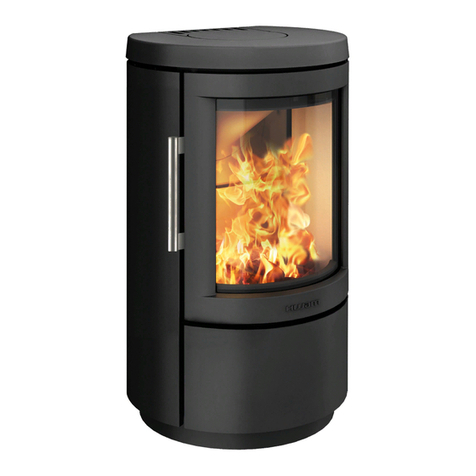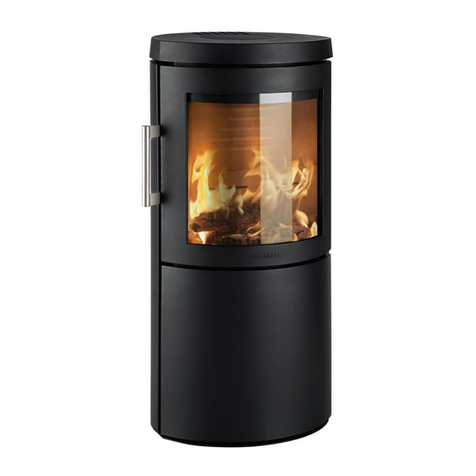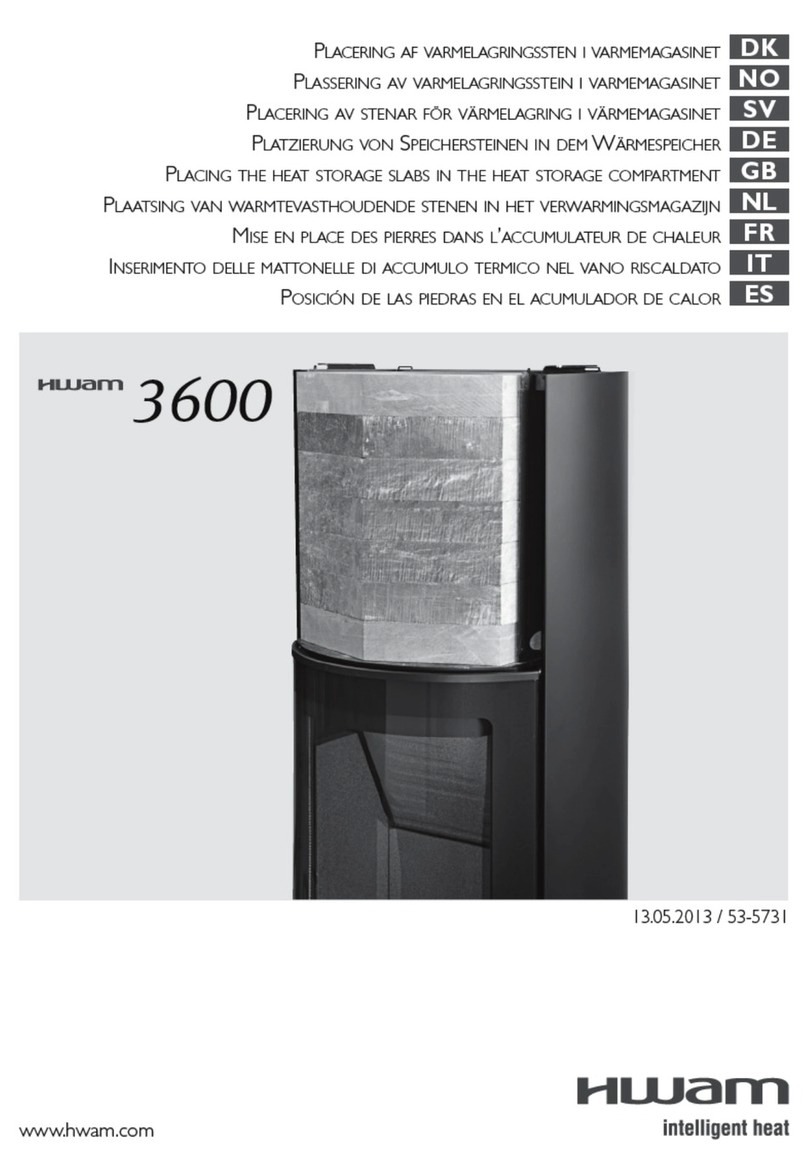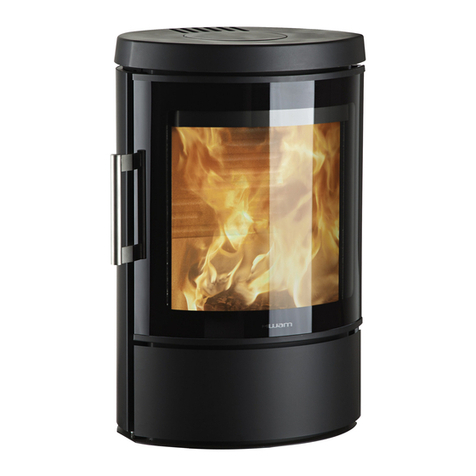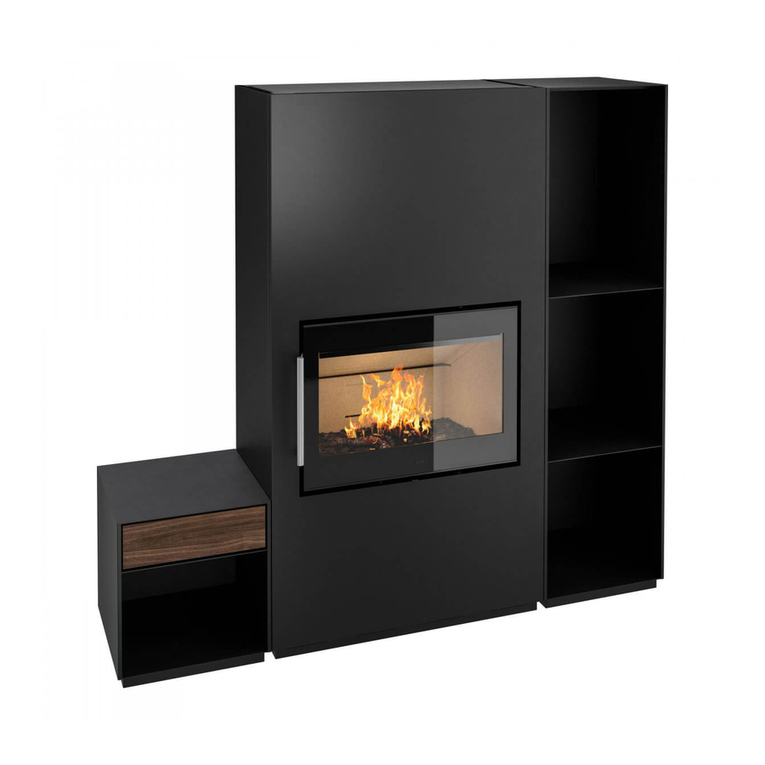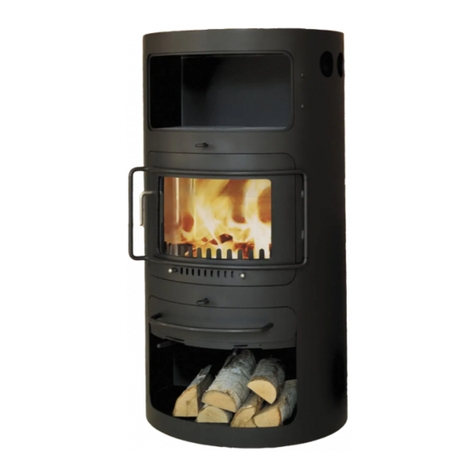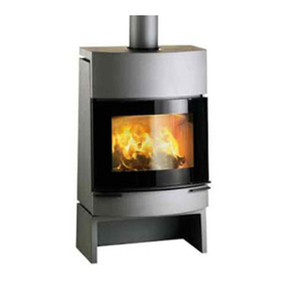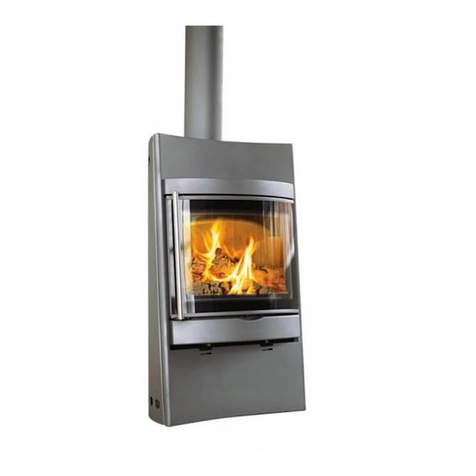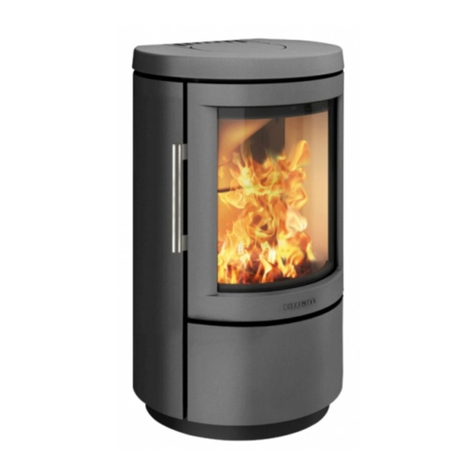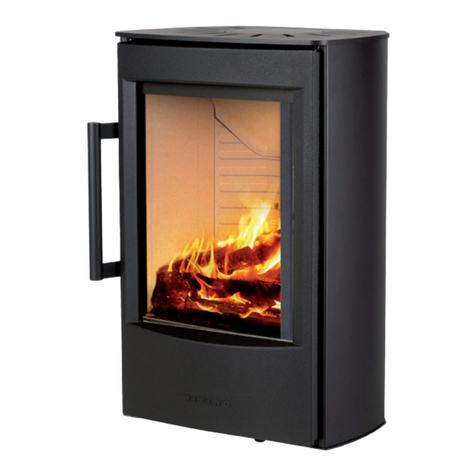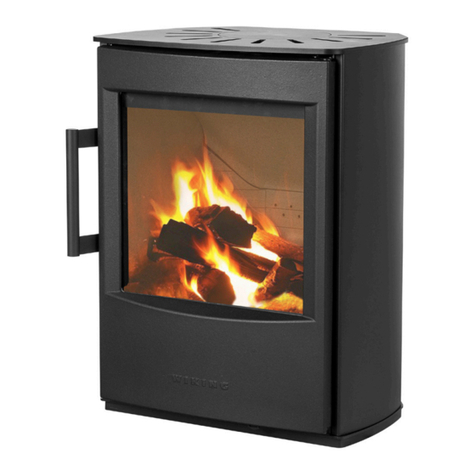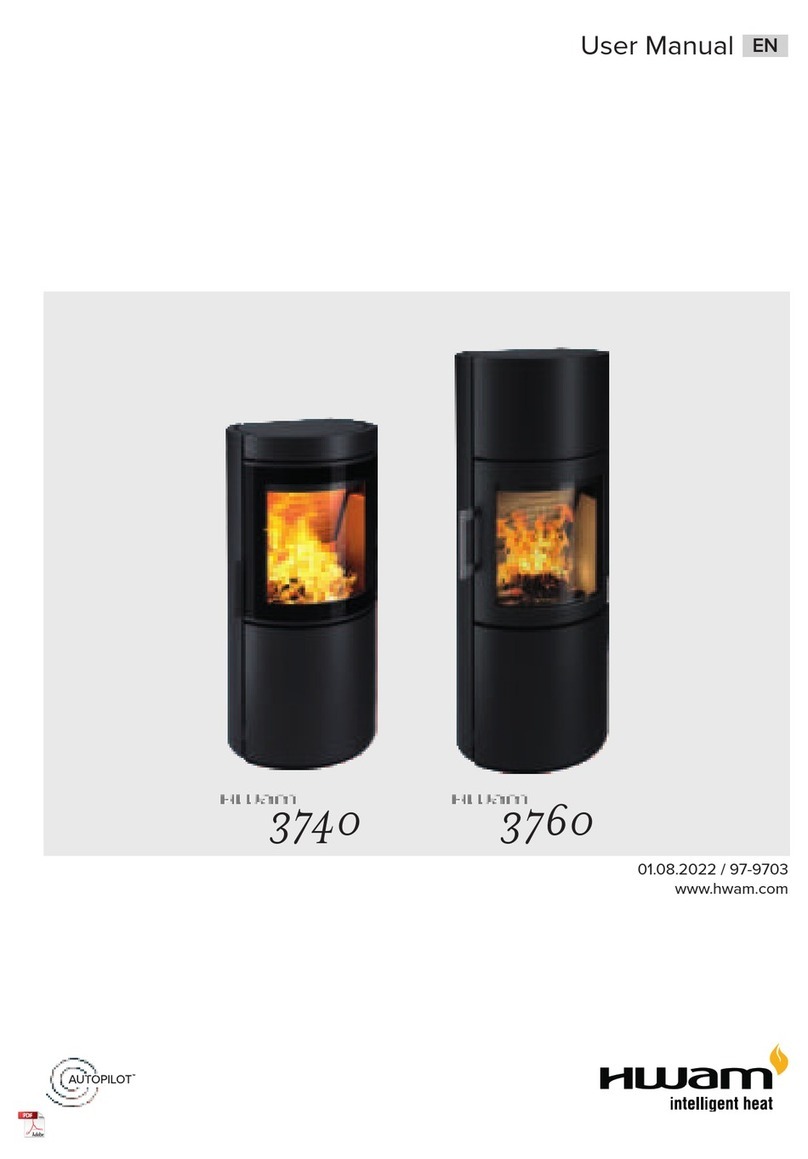Gas and oil are consistent fuels and stoves can be designed to obtain the maximum heat from them with the
user having to do no more than choose a heat setting. Solid fuels are almost infinitely variable and however
well a stove has been designed, its performance will ultimately depend on the way the user operates it. Whilst
we have endeavoured to make the stove as simple to operate as possible, understanding just a little about the
fuels and the way your stove was designed to burn them will be rewarded by your being able to achieve the
best from your stove with the least effort.
As a fuel, wood is visually exciting, environmentally friendly, and a renewable source of energy but it is one of
the most complex fuels to burn. Wood contains two sorts of components which burn. The fixed carbons which
burn as the glowing embers, and the compounds that vaporize when heated to burn as volatile gases, giving
the endlessly changing flame patterns. The fixed carbon, which is charcoal, is a virtually trouble free fuel and
needs little assistance to burn cleanly, but it would be difficult to describe it as visually entertaining.
When set to its wood burning position, your stove heats the incoming air to ensure it has the minimum cooling
effect on any volatiles. The air is supplied as slowly as possible so as not to blow out any established flames
and it comes in across the full width of the stove ensuring that all parts of the stove receive an equal air supply.
Because the air enters slowly over a curved blade the air is directed towards the burning volatiles rather than
the bed of the fire, this allows the tar laden volatile components to use the incoming air as a priority. By
placing a log or two towards the front of the fire whenever the flames from previous logs die down, a bed
of charcoal will build up. This will be virtually pure carbon and capable of burning for incredibly long periods
without causing any tar deposits on the stove’s glass even when the air supply is reduced to minimal setting.
Always put logs on to the fire before flames from previous logs have extinguished, this will ensure that when
the new logs begin releasing gases it will ignite. Unburned gases will cause smoke and tar deposits and
wastes potential heat. Putting on too much wood at one time will both restrict the air supply and cool the
combustion chamber making it more difficult for the gases to burn cleanly.
Never put on fresh wood whilst operating the stove with a minuscule air supply as a technique for operating
for long periods without attention, it will cause both chilling and air restriction. Properly controlling the rate at
which wood burns is not simply a matter of restricting the air supply, nor running the stove with a very small
fire, it is maintaining the temperature and ignition flames in the stove whilst balancing the release of gases to
match the chosen air supply.
No two woods have the same burning characteristics but all wood contains water. It is difficult to quantify the
amount of water any log might hold whilst its exterior feels dry but it would not be unreasonable to estimate a
mug full from a good sized, poorly seasoned log. Imagine pouring that onto your fire every time you introduce
a new log and you will realize its obvious effect of cooling the fire. What is not so obvious is that the moisture
mixing with the vaporized gases is cooling them, possibly below their ignition temperature. So the water
within a wet log cooled the stove, it has prevented much of the potential heat from the log being realized and
the unburned combustible products will be deposited as tars within the stove and flue.
Coal suitable for stoves has only a very small proportion of components that vaporise and a far higher fixed
carbon content and when the stove is set to its coal burning position air is supplied through the grate to the
underside of the fire bed to supply the carbon directly. There will be sufficient spare air travelling through the
fire bed to reach the limited gases being released and this air will have been heated as it passed the burning
coals.
Because coals suitable for stoves have so little vaporizing content they are virtually trouble free fuels to use,
but if you are using one of the manufactured smokeless coals take care to ensure the ash pan is checked
regularly because some of them have a very high ash content; this is especially important if you change
“brands” because the ash contents can vary dramatically.
Multifuel And Wood Stoves


















